Mold in Air Vents
Your eyes itch, your head is pounding and you can’t stop coughing.
No, it isn’t seasonal allergies or the dreaded flu.
Rather, these symptoms could point to another, lesser-known issue that’s equally worrisome: You could have mold in air ducts around your house.
Your HVAC system is supposed to deliver clean, fresh air to every room of your home. But when mold spores infiltrate your ventilation system, your air is anything but fresh and clean.
The good news? You can spot and treat this issue quickly as long as you know what to look for. Today, we’re sharing tips on how to tell if you have mold in your air ducts. We’ll also describe what steps you can take to eliminate it right away.
Ready to learn more? Let’s get started.
Worried About Mold in Your Air Vents? Get a Free Inspection!
Mold in air vents can compromise your home’s air quality and pose health risks. Don’t let it go unchecked! Contact Mold Busters for a free virtual mold inspection. Our experts will provide a comprehensive assessment and a plan to address any mold issues, ensuring your home is safe and healthy. Act now to protect your space!
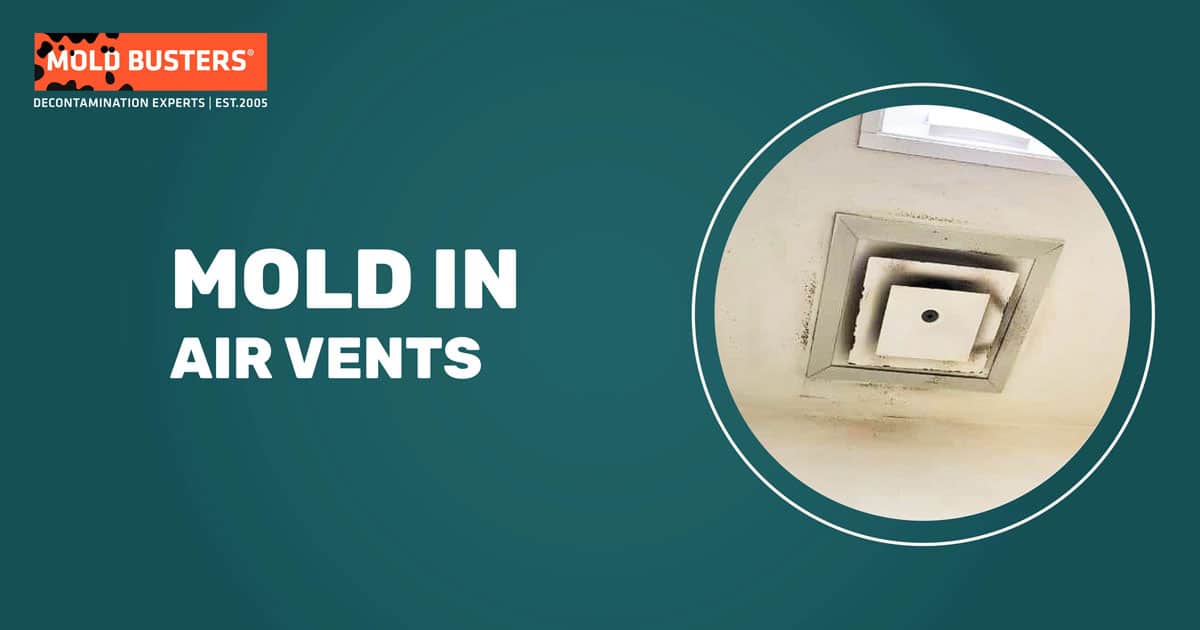
Signs of Mold in Air Vents
In most cases, you’ll feel mold in your vents before you actually see it. Breathing in the contaminated air can result in a range of physical symptoms, which can vary from person to person. The most common red flags include:
- Itchy and irritated eyes
- Skin rashes
- Nausea
- Vomiting and/or diarrhea
- Coughing and sneezing
- Difficulty breathing
- Impaired concentration
In addition to these health concerns, you might also smell the mold itself.

Is there a persistent, musty odor present in your home that you only notice when the A/C is running? If so, it could point to the presence of mold nearby.
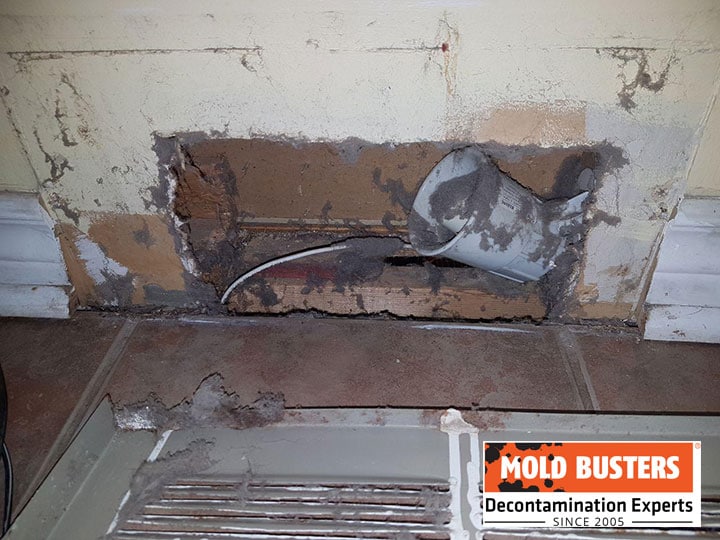
There are many behind-the-scenes issues that could lead to mold in your air vents. Sometimes, it develops in the aftermath of a flood. Other times, it can signal an operational problem with your HVAC system. Either way, it’s important to address it as soon as possible to avoid further complications.
Mold Inside and Around Air Vents
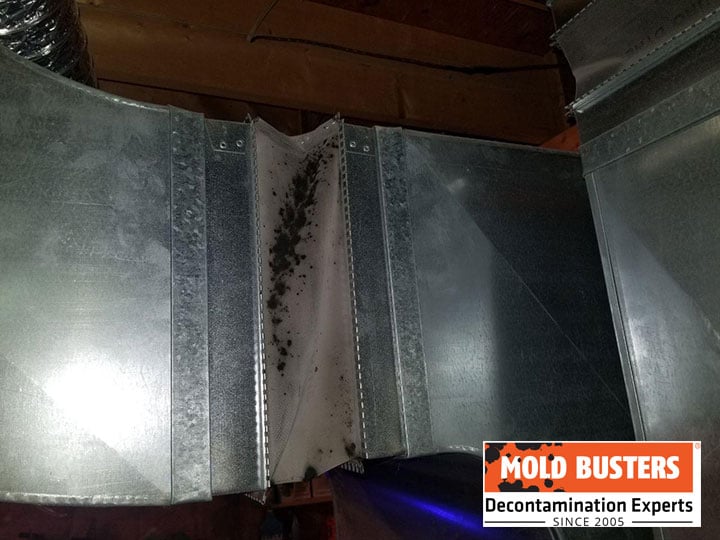
Sometimes, you can actually see mold spores as they grow inside the ducts, around the air vents and in the drip pans. Most of the time, they will look like fine, black dust.
You can try to wipe it away, but you might be surprised to see that it quickly returns! This is one way to distinguish moldy vents from simply dirty vents.
Mold Inside Air Vent Filters
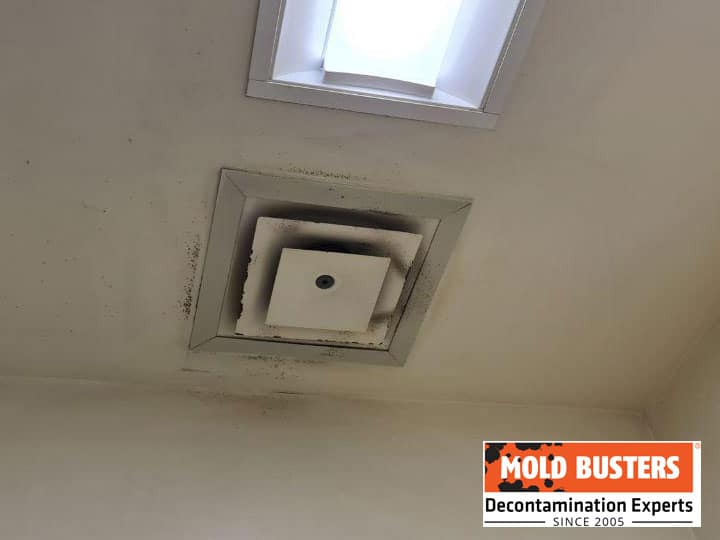
Because they’re porous, air vent filters serve as excellent, accommodating homes for mold spores to take up residence. If they’re allowed to grow and spread on the surface of your filter, it won’t be long before they’re flying through your entire house.
This is why it’s important to change your air filters regularly. Most manufacturers recommend that you perform this step every 60 to 90 days. If you’re in the Montreal or Ottawa area and need assistance with this, our team can help.
What are Common Causes of Mold Growth Inside Air Vents?
We’ve discussed what mold in your air vents looks like, but where does it come from?
Mold requires two things to grow: moisture and warmth. If your home has poor ventilation or if moisture becomes trapped in your walls and causes condensation, it doesn’t take long for mold to form.
There are a few HVAC issues that could lead to these conditions. Let’s explore a few of the most common ones.
1. Oversized AC Unit
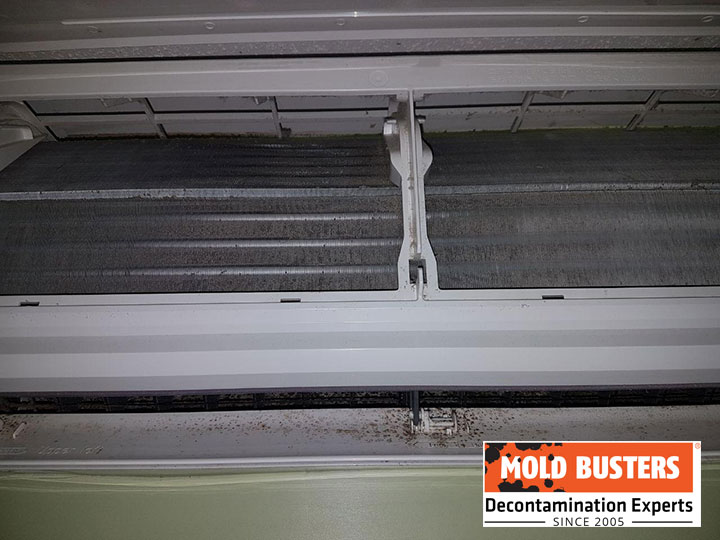
Is your AC unit too big for your space? If so, it could cool small areas too quickly, then cut off before dehumidifying the air. This can cause moisture to accumulate in your rooms, as well as in your ductwork.
2. AC Temperature Is Too Low
You might like to keep your house a little on the cooler side, but when that chilly air from your HVAC system hits the warmer air in your rooms, it creates a significant temperature differential. This can cause moisture in the air to condense in and around your air vents, as well as on other surfaces in the room.
Most of the time, that moisture will dry out and won’t cause an issue. However, if the condensation sticks around for longer than normal, it becomes a breeding ground for mold. However, don’t go cranking up your thermostats just yet. You’ll need a differential of about 20 degrees for condensation to form.
3. Leaky Air Ducts
Sometimes, mold forms simply because your air ducts are worn and torn. Similar to the scenario described above, if yours have leaky air ducts, they can let in warm room air. This temperature differential can cause moisture to condense on the ducts.
Types of Mold Inside Air Vents
Let’s be clear: Any kind of mold in your air vents is bad mold. Yet, there are a few different species that can form depending on the exact situation.
Below is a list of the most common types, along with their distinguishing characteristics:
- Acremonium: White and powdery
- Alternaria: Dark green or brown with a velvet texture
- Aspergillus: Mostly green, yellow or white, but can take on different colours
- Chaetomium: Brown with the texture of cotton
- Stachybotrys: Toxic black mold
- Fusarium: White, pink or gray-coloured, associated with water damage

Did you know?
Penicillium / Aspergillus group is the most common toxic mold type found in homes we tested?! Find out more exciting mold stats and facts inside our mold statistics page.
As soon as you notice any signs of mold in or around your air vents, it’s important to contact a professional and licensed mold company.
Is Mold in Air Vents Dangerous?
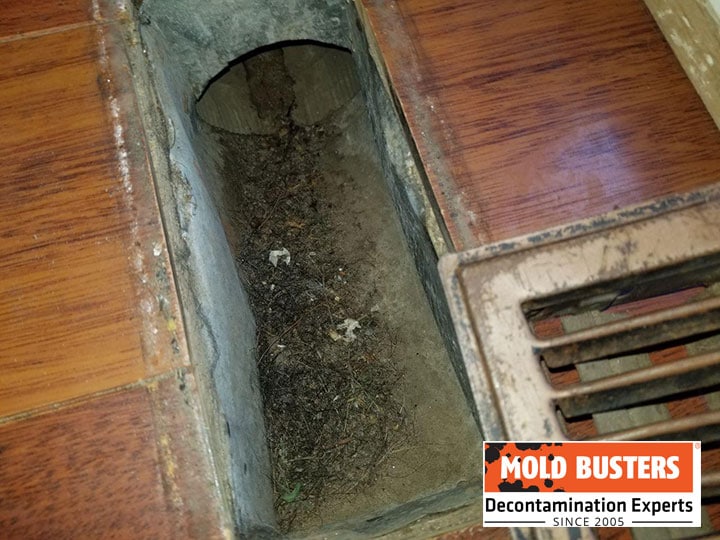
Your ductwork circulates air throughout your home. That means if there is mold present within it, your family could be breathing in unhealthy air. This is especially the case if your home is contaminated with molds that produce mycotoxins, such as:
- Aspergillus
- Fusarium
- Alternaria
A majority of molds only create dust and other allergens that lead to minor issues, including:
- Itchy eyes
- Coughing
- Sinus problems
Exposure to mycotoxins, however, can be much more severe and can include any or all of the following:
- Fever
- Heart disease
- Pneumonia-like symptoms
- Memory loss
- Vision loss
- Rheumatic disease
- Chronic fatigue
- ADHD
- Skin rashes
It can be difficult to know which kind of mold you’re dealing with. That’s why it’s always important to let an expert take the reins. At Mold Busters, we offer a virtual inspection service that can help identify the type of mold you’re dealing with.
How to Identify Mold Inside Air Vents?
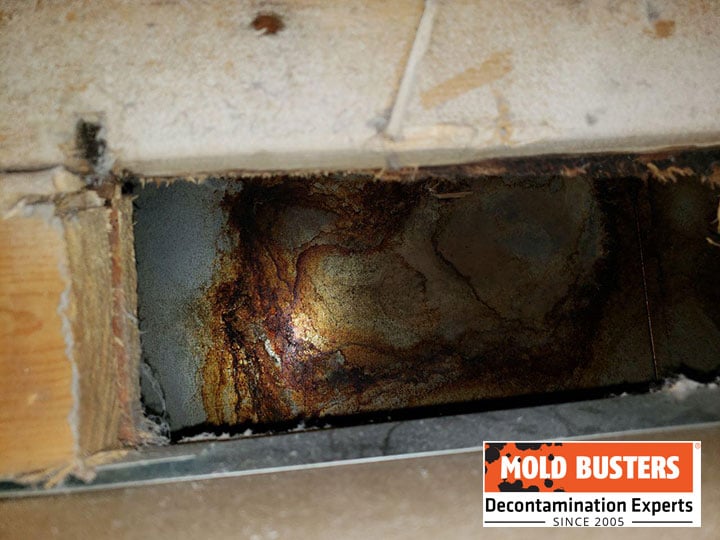
So, you know something’s going on inside your air vents, but you aren’t exactly sure what kind of fungal growth you’re looking at.
Your first step might be to research the colour and texture of the mold to narrow down what it could be. However, even then you could get the answer wrong. The only safe and sure way is to hire a mold professional to perform a mold test and thorough inspection of your HVAC system.
Once you know what kind of mold you’re dealing with, you can take the appropriate steps necessary to eradicate it.
How to Remove Mold From Air Vents?
When you first notice mold in your air vents, your first instinct might be to mix up a bleach solution and start scrubbing. While this approach can work in a small, isolated spot such as your shower, it’s ineffective for a large-scale area such as your ductwork.
Ultimately, larger and bigger mold problems require the expert skills of a team that’s certified to perform mold testing, inspection, and removal.
Trying to tackle the issue yourself could make it worse. For one, you could damage your vents as you try to work in and around them. Moreover, a DIY mold removal project could also expose you to more harmful spores, as well as toxic fumes from your cleaning products.
How to Prevent Mold in Air Vents?
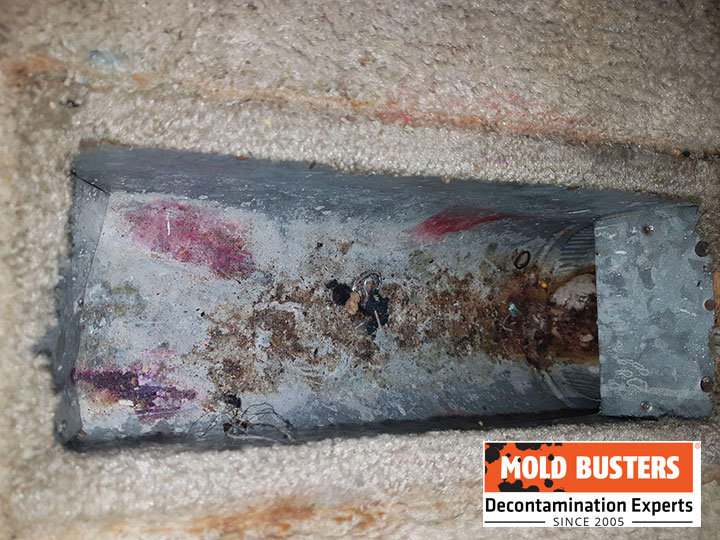
Of course, the best way to eliminate mold in your air vents is to prevent it from forming in the first place! Want to keep yours as clean as possible? Here are a few steps to take:
- Keep your HVAC ducts clean
- Make sure there is no furniture blocking your air vents
- Clean your drip pans regularly
- Seal all vent leaks immediately
- Use a dehumidifier to balance the moisture level in your air (an RH of 30-50% is ideal)
- Properly size any new HVAC installations
Got Mold in Air Ducts? We Can Help!
It can be disheartening to notice the first signs of mold in air ducts around your house. You’re naturally worried about health issues, structural damage and the costs of fixing it all.
Thankfully, while this situation might be new to you, it isn’t to us.
Our team of expert mold professionals has seen it all, and we have the proper tools, resources, and knowledge to do it all. Whether you need an initial inspection, extensive mold removal or any step in between, you’re covered. We’re committed to quality, affordability, and integrity at every turn along the way.
Contact us today to learn more and let us restore your home and your peace of mind.

Get Special Gift: Industry-Standard Mold Removal Guidelines
Download the industry-standard guidelines that Mold Busters use in their own mold removal services, including news, tips and special offers:
"*" indicates required fields
Published: September 11, 2020 Updated: May 29, 2024

Written by:
John Ward
Account Executive
Mold Busters
Fact checked by:
Michael Golubev
CEO
Mold Busters
